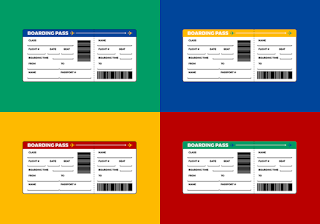8 tips for safer online banking
Online banking is nice and convenient. It does come with certain risks however. Just as you hear of people being robbed at
ATMs, or having their cards cloned, so online accounts are also a point of
vulnerability.
Follow these 8 tips and you can minimise the risks to your
finances and bank safely online:
1. Choose an account
with two factor authentication
Try to get a bank account that offers some form of two
factor authentication for online banking.
These days many, but not all, banks offer a small device
that can be used to generate a unique code each time you log in. This code is only valid for a very short
period of time and is required in addition to your login credentials in order
to gain access to your online account.
2. Create a strong
password
If your bank requires a user-generated password in order to
access online accounts make sure you choose one that is strong. The best way to achieve this is by making it
long and a mix of upper and lower case letters, numbers, and special
characters.
Always avoid using any common words or phrases and never
create a password that contain your name, initials, or your date of birth. If
your bank allows it, change your password every few months.
When setting up online banking, if your bank asks you to
provide answers to some standard security questions remember that the answer
you give doesn’t have to be the real one.
So if you are asked to provide your mum’s maiden name to a security
question, respond with a random answer like “Radio Star”. Use a password
manager if you are concerned about how to remember everything!
3. Secure your
computer and keep it up-to-date
Security software is essential these days, regardless of
what you use your computer or laptop for.
As a minimum, make sure you have a firewall turned on and
are running antivirus software. This
will ensure you are protected from Trojans, keyloggers and other forms of
malware that could be used to gain access to your financial data.
You’ll also want to keep your operating system and other
software up-to-date to ensure that there are no security holes present.
4. Avoid clicking
through e-mails
No financial institution worth their salt will send you an e-mail
asking you to provide any of your login details.
If you receive an e-mail that appears to be from your bank
that asks for such details then treat it with suspicion as it may well be a
phishing attempt to trick you into handing your credentials over.
Likewise, be aware of links in e-mails that appear to be
from your bank – this is a trick often employed by the bad guys to get you onto
a website that looks like your bank. When you log in to ‘your account’ they will
steal your username and password and, ultimately, your cash.
It is always safer to access your online bank account by
typing the address into your browser directly.
Also, be aware of unsolicited phone calls that purport to be
from your bank. While your financial institution may require you to answer a
security question, they should never ask for passwords or PINs (they may ask
for certain letters or numbers from them, but never the whole thing).
If in doubt, do not be afraid to hang up and then call your
bank back via a telephone number on your statement or go in branch yourself.
5. Access your
accounts from a secure location
It’s always best practice to connect to your bank using
computers and networks you know and trust. If you need to access your bank online from remote
locations you might want to set up a VPN (Virtual Private Network) so that you
can establish an encrypted connection to your home or work network and access
your bank from there.
Look for a small padlock icon somewhere on your browser and
check the address bar – the URL of the site you are on should begin with
‘https’. Both act as confirmation that
you are accessing your account over an encrypted connection.
6. Always log out
when you are done
It is good practice to always log out of your online banking
session when you have finished your business. This will lessen the chances of
falling prey to session hijacking and cross-site scripting exploits.
You may also want to set up the extra precaution of private
browsing on your computer or smart phone, and set your browser to clear its
cache at the end of each session.
7. Set up account
notifications (if available)
Some banks offer a facility for customers to set up text or e-mail
notifications to alert them to certain activities on their account. For
example, if a withdrawal matches or exceeds a specified amount or the account
balance dips below a certain point then a message will be sent.
Such alerts could give quick notice of suspicious activity
on your account.
8. Monitor your
accounts regularly
It should go without saying that monitoring the your bank
statement each month is good practice as any unauthorised transactions will be
sure to appear there.
Why wait a whole month to discover a discrepancy? With online banking you have access 24/7 so
take advantage of that and check your account on a regular basis. Look at every
transaction since you last logged in and, if you spot any anomalies, contact
your bank immediately.


Comments
Post a Comment